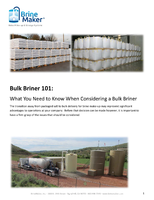Transponder and Inlay use RFID to provide asset visibility.
Press Release Summary:
Utilizing half-duplex radio communication, 12 mm Multi-Usage Wedge Transponder and 24 mm LF Circular Inlay are suited for harsh and metallic environments. Able to be directly mounted on metal, transponder features 208 bits of user-programmable memory and password-protected write capability. Circular inlay, available with 80 bits of read/write memory or 64 bits of read only memory, is ISO/IEC 11785 compliant and can be encapsulated into variety of materials and form factors.
Original Press Release:
Texas Instruments Delivers RFID Asset Visibility in Harsh and Metallic Environments with Two New Low Frequency Products
Multi-Usage Wedge Transponder and 24 mm LF Circular Inlay designed for industrial applications with TI's half-duplex technology
DALLAS, June 30 /-- While 134.2 kHz low frequency (LF) RFID technology has been used to identify everything from livestock to automotive parts since the late 1980s, a host of new applications are demanding tags with improved performance in highly metallic and other harsh industrial environments. Texas Instruments Incorporated (TI) (NYSE:TXN), www.ti.com/rfid, today announced two additions to its LF product family: the 12 mm Multi-Usage Wedge Transponder and 24 mm LF Circular Inlay. The 12 mm Multi-Usage Wedge Transponder offers improvements in chip circuitry that enable direct-on-metal mounting. The 24 mm LF Circular Inlay, manufactured using TI's patented tuning process, provides improved consistency in read and write performance in applications such as waste management and industrial production.
The tags incorporate a number of TI's patented RFID technology and quality innovations including half-duplex (HDX) radio communication. HDX boosts read range by 50 percent compared with full-duplex (FDX) LF and offers a stronger RF signal because the HDX reader shuts down during the HDX tag's response. This allows the HDX reader to concentrate on receiving the signal thereby obtaining an accurate read as compared to FDX. In FDX systems, the reader signal remains on and may create RF interference as it attempts to read the FDX tag. HDX also features frequency shift keying technology which makes TI's tags more immune to electromagnetic interference (EMI) and other ambient environmental noise, allowing the reader to effectively read and differentiate tags that are close together.
Based on his experience with TI's LF HDX technology, Gerald Dittrich, research & development director of Brooks Automation Germany said, "Our customers have challenging conditions that require TI's LF HDX technology because it offers excellent read/write performance. The TI MUSA transponder delivers on that promise. We found that it's both shock resistant and performs particularly well in customer installations where metal resides."
TI's new tags are designed for rugged applications like container tracking in waste management, vehicle identification and access control, as well as other applications in highly metallic environments, such as oil refineries, oil drilling and tool production. The tags can also be applied to carbon fiber products, including aerospace, automotive and bicycle parts, and are developed to withstand the high temperatures of the manufacturing process.
"Low frequency HDX is the workhorse we recommend for applications where metal, temperature, and noisy environments often challenge other technologies," said Mikael Ahlund, director of asset tracking for Texas Instruments RFID Systems. "The performance and quality innovations we continue to make in our LF product portfolio ensure that the technology continues to find new applications."
In addition to being able to be directly mounted on metal, TI's 12 mm Multi-Usage Wedge Transponder also features 208 bits of flexible, user programmable memory and a password protected write capability that enables users to build a level of security into their application. For example, a company can have one portion of the tag's memory programmed with a factory-locked number, such as a manufacturer's ID code, while some of the other data sections can be freely used to record status, maintenance, or location updates over the life of an asset. Security can be imposed with a password that allows data updates only by authorized parties.
The 24 mm LF Circular Inlay is available with 80 bits of read/write memory or 64 bits of read only memory. The inlay is ISO/IEC 11785 compliant and can be easily encapsulated into a variety of materials and form factors. The inlays undergo complete inline parametric and functional testing to provide optimum off-the-reel yield. Both products are compatible with TI's reader portfolio. TI's HDX tag-reader combination offers the most optimized performance in addition to ease of installation and use.
TI's 134.2 kHz LF product family includes more than 40 transponder, inlay, antenna and reader products incorporating 20 years of the company's RFID design and manufacturing experience. For more information, visit http://ti.com/lowfrequency.
About Texas Instruments RFID Systems
Texas Instruments is the world's largest integrated manufacturer of radio frequency identification (RFID) transponders and reader systems. Capitalizing on its competencies in high-volume semiconductor manufacturing and microelectronics packaging, TI is a visionary leader and at the forefront of establishing new markets and international standards for RFID applications. For more information, contact RFID Systems at 1-800-962-RFID (North America) or +1 214-567-RFID (International), or visit the Web site at http://www.ti.com/rfid/
About Texas Instruments
Texas Instruments (NYSE:TXN) helps customers solve problems and develop new electronics that make the world smarter, healthier, safer, greener and more fun. A global semiconductor company, TI innovates through manufacturing, design and sales operations in more than 25 countries. For more information, go to www.ti.com/.




